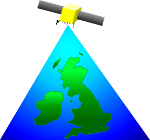Project description example
Title: Absolute fixing of tide gauge benchmarks and land levels.
Aims, max 100 words: The aims of the wider project, which the proposed archive data usage supports, are to use tide gauge, CGPS and absolute gravity data observed on a national scale to provide accurate information on current changes in absolute ground level in Britain and past changes in sea level around the coast of Britain, and to provide an assessment of potential future changes in relative sea level around the coast of Britain.
Objectives, max 100 words: The objectives of the specific archive data usage are to process the CGPS data from the BIGF scientific stations, using scientific GPS software, in order to produce daily coordinate estimates which can then be used to create time series, from which estimates of horizontal and vertical station velocities can be obtained and used as a measure of current vertical land movements or changes in ground level.
Summary, max 250 words: Researchers studying climate change have used historical tide gauge measurements from all over the world to investigate the changes in sea level that have occurred over the last century or so. However, such estimates are a combination of any true sea level variations and any vertical land movements or changes in ground level at the specific tide gauge. For a tide gauge record to be used to determine the climate related component of changes in sea level it is necessary to correct for any changes in ground level.
This project is using tide gauge, CGPS and absolute gravity data observed on a national scale
- to provide accurate information on current changes in absolute ground level (i.e. referenced to the centre of the Earth) in Britain and compare these with longer-term geological estimates.
- to provide accurate information on past changes in sea level (ie referenced to the centre of the Earth), around the coast of Britain, and compare these with estimates of past changes in global sea level.
- to provide an assessment of potential future changes in relative sea level (i.e. referenced to the local land), around the coast of Britain.
Methodology, max 250 words: In terms of the archive data used, these will be processed along with data from IGS stations, that are part of the global IGb00 network, or a European subset of this. The data will be processed using three different processing techniques/strategies.
- The use of the IESSG's in-house developed GPs Analysis Software version 2.40 (GAS2.4) to produce a series of daily regional network solutions, based on double-difference (DD) and a European subset of the IGb00 network.
- The use of the Bernese Software version 5.0 (BSW5.0) to produce a series of daily station-specific solutions, based on precise point positioning (PPP) and all stations of the global IGb00 network.
- The use of the Bernese Software version 5.0 (BSW5.0) to produce a series of daily regional network solutions, based on double-difference (DD) and a European subset of the IGb00 network.
In all of the processing, the parameters considered will include:
– The use of IGS or IGR products (orbits, clocks and Earth rotation parameters).
– The use of the ionospherically free observable.
– The use of an elevation cut off angle of 10 degrees.
– Estimation of tropospheric zenith total delay (ZTD) at 15 minute or 1 hour intervals.
– Corrections for antenna phase centre variations using the IGS relative antenna phase centre variation models.
– Corrections for solid Earth tides and ocean tide loading according to IERS standards.


